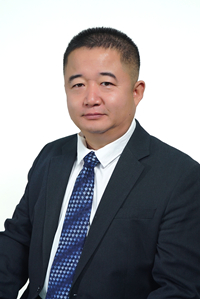发布时间:2021-04-28

姓名:毛国柱
职称:教授
所在系、所:环境科学与生态系
电子信箱:maoguozhu@tju.edu.cn
通讯地址:天津市津南区海河教育园区雅观路135号天津大学环境科学与工程学院 300350
主要工作与学习经历:
2020.7- 教授 天津大学环境科学与工程学院
2015.9-2016.8 访问学者 佐治亚理工学院
2014.7-2014.9 访问学者 南澳大利亚大学
2010.7-2020.6 副教授 天津大学环境科学与工程学院
2007.7-2010.6 讲师 天津大学环境科学与工程学院
2003.9-2007.7 北京大学环境学院,获理学博士学位
2000.9-2003.7 天津大学化工学院,获工学硕士学位
1996.9-2000.7 天津大学化工学院,获工学学士学位
主要研究方向:
环境规划、水环境学
主讲课程:
本科生课程:环境规划与管理、创新思维与创业实践
研究生课程:环境规划管理与影响评价、文献计量与知识挖掘
主要学术兼职:
中国环境科学学会环境规划专业委员会委员
中国环境科学学会水环境分会会员
Journal of Cleaner Production, Editor Board
主要学术成就、奖励及荣誉:
2014年河南省国土资源科学技术奖二等奖
2012年天津市科学技术奖科技进步奖二等奖
2012年环保部宣教中心优秀课程奖
2005年天津市科学技术奖科技进步奖三等奖
主要科研项目:
国家自然科学基金项目:西藏高原矿区土壤重金属迁移模式识别及固定/转化机制解析
国家重点研发计划项目课题:冬季两项和跳台滑雪项目测风系统及训练比赛大数据库
天津市武清区林业局委托项目:天津武清永定河故道国家湿地公园生物多样性监测
中国人民解放军某部委托项目:某机场鸟情及生态环境调查
代表性论著:
1. Yang P,Peng S,Benani N, et al.2022.An integrated evaluation on China's provincial carbon peak and carbon neutrality.Journal of Cleaner Production,377:134497
2. Mao G, Han Y, Liu X, et al.2022.Technology status and trends of industrial wastewater treatment: A patent analysis.Chemosphere,288:132483.
3. Mao G, Hu H, Liu X, et al.2021.A bibliometric analysis of industrial wastewater treatments from 1998 to 2019.Environmental Pollution,275:115785.
4. Mao G,Hou T, Liu X, et al. 2021.How can bicycle-sharing have a sustainable future? A research based on life cycle assessmen. Journal of Cleaner Production, 282:125081.
5. Mao G, Zhang Y, Tong Y, et al.2020.Ecological risk assessment of heavy metals to aquatic organisms in the Lhasa River, Tibet, China. Environmental Science and Pollution Research, 27(21):26091-26102.
6. Mao G, Zhao, Y,Zhang, F, et al.2019.Spatiotemporal variability of heavy metals and identification of potential source tracers in the surface water of the Lhasa River basin.Environmental Science and Pollution Research,26(8):7442-7452.
7. Du H,Chen Z, Mao G*, et al.2019.Evaluation of eutrophication in freshwater lakes: A new non-equilibrium statistical approach.Ecological Indicators, 102:686-692.
8. Mao G*, Huang N, Chen L, et al.2018.Research on biomass energy and environment from the past to the future: A bibliometric analysis.Science of The Total Environment,635:1081-1090.
9. Du H,Chen Z, Mao G* , et al.2018.A spatio-temporal analysis of low carbon development in China's 30 provinces: A perspective on the maximum flux principle.Ecological Indicators, 90: 54-64.
10. Zhang S, Mao G* ,John C, et al.2017.Groundwater remediation from the past to the future: A bibliometric analysis. Water Research , 119: 114-125.
11. Wang L, Zhao L,Mao G*, et al.2017.Way to accomplish low carbon development transformation: A bibliometric analysis during 1995–2014.Renewable & Sustainable Energy Reviews,68: 57–69.
12. Wang Y, Lai N, Mao G*, et al.2017.Air pollutant emissions from economic sectors in China: A linkage analysis. Ecological Indicators, 77: 250-260.
13. Mao G, Chen L, Yang Y, et al. 2017. Vertical profiles of water and sediment denitrifiers in two plateaufreshwater lakes.Applied Microbiology and Biotechnology, 101(8):3361-3370.
14. Mao G, Wang S, Teng Q, et al. 2017. The sustainable future of hydropower: a critical analysis of cooling units via the Theory of Inventive Problem Solving and Life Cycle Assessment methods.Journal of Cleaner Production.142:2446-2453.
15. Mao G, Liu X, Du H, et al. 2016. An expanding and shifting focus in recent environmental health literature: A quantitative bibliometric study. Journal of Environmental Health.78(6):54-61.
16. Mao G, Chen H, Du H,et al.2016. Energy Consumption, Environmental Impacts and Effective Measures of Green Office Buildings: A Life Cycle Approach.Journal of Green Building,10(4):161–176.
17. Mao G, Zou H, Chen G,et al. 2015.Past,current and future of biomass energy research:A bibliometric analysis.Renewable & Sustainable Energy Reviews,52: 1823–1833.
18. Mao G, Liu X, Du H,et al. 2015.Way forward for alternative energy research: A bibliometric analysis during 1994-2013.Renewable & Sustainable Energy Reviews,48:276–286.
19. Hou Q, Mao G*, Zhao L, et al. 2015.Mapping the scientific research on life cycle assessment:a bibliometric analysis.International Journal of Life Cycle Assessment, 20:541–555.
20. Liu X, Mao G*, Ren J, et al. 2015. How might China achieve its 2020 emissions target? A scenario analysis of energy consumption and CO2 emissions using the system dynamics model.Journal of Cleaner Production.103:401-410.
21. Du H, Li B, Brown MA, Mao G* et al. 2015. Expanding and shifting trends in carbon market research: A quantitative bibliometric study. Journal of Cleaner Production.103:104-111.
22. Wang Y, Wang W, Mao G*, et al. 2013. Industrial CO2 emissions in China based on the hypothetical extraction method: Linkage analysis. Energy Policy, 62: 1238-1244.
23. Du, H, Guo, J, Mao, G*, Smith, AM, et al. 2011. CO2 emissions embodied in China-US trade: Input-output analysis based on the emergy/dollar ratio. Energy Policy, 39(10): 5980-5987.